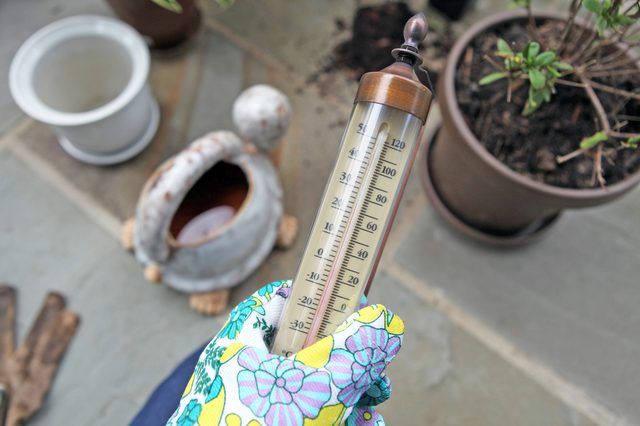Bulbs
Flower Basics
Flower Beds & Specialty Gardens
Flower Garden
Garden Furniture
Garden Gnomes
Garden Seeds
Garden Sheds
Garden Statues
Garden Tools & Supplies
Gardening Basics
Green & Organic
Groundcovers & Vines
Growing Annuals
Growing Basil
Growing Beans
Growing Berries
Growing Blueberries
Growing Cactus
Growing Corn
Growing Cotton
Growing Edibles
Growing Flowers
Growing Garlic
Growing Grapes
Growing Grass
Growing Herbs
Growing Jasmine
Growing Mint
Growing Mushrooms
Orchids
Growing Peanuts
Growing Perennials
Growing Plants
Growing Rosemary
Growing Roses
Growing Strawberries
Growing Sunflowers
Growing Thyme
Growing Tomatoes
Growing Tulips
Growing Vegetables
Herb Basics
Herb Garden
Indoor Growing
Landscaping Basics
Landscaping Patios
Landscaping Plants
Landscaping Shrubs
Landscaping Trees
Landscaping Walks & Pathways
Lawn Basics
Lawn Maintenance
Lawn Mowers
Lawn Ornaments
Lawn Planting
Lawn Tools
Outdoor Growing
Overall Landscape Planning
Pests, Weeds & Problems
Plant Basics
Rock Garden
Rose Garden
Shrubs
Soil
Specialty Gardens
Trees
Vegetable Garden
Yard Maintenance
How to Care for a Potted Azalea
How to Care for a Potted Azalea. Azaleas need acidic soil, but if you grow a potted azalea, you can enjoy showy spring flowers in any indoor or outdoor partial-shade site. Azaleas (Rhododendron spp.) grow outdoors in U.S. Department of Agriculture plant hardiness zones 4 through 9 and indoors in all areas. As well as regular feeding and watering,...
Azaleas need acidic soil, but if you grow a potted azalea, you can enjoy showy spring flowers in any indoor or outdoor partial-shade site. Azaleas (Rhododendron spp.) grow outdoors in U.S. Department of Agriculture plant hardiness zones 4 through 9 and indoors in all areas. As well as regular feeding and watering, these woody shrubs need two months at low temperatures to form flower buds. Containers for azaleas must have drainage holes, and wide pots are better than narrow pots because azalea root systems are shallow.
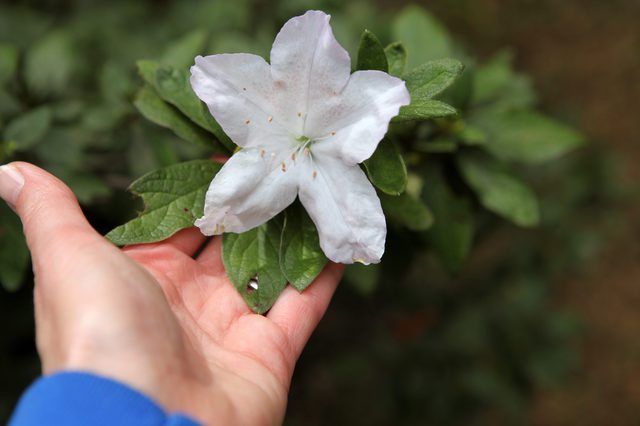
In addition to acidic potting soil, a potted azalea needs a fertilizer for acid-loving shrubs. Dilute a 30-10-10 fertilizer formulated for azaleas or other acid-loving plants at a rate of 1/2 teaspoon per 1 gallon of water, and apply the solution every two weeks from the middle of spring through summer. Stop applying the fertilizer in mid-August to discourage strong growth at the expense of flowers. Pure peat moss potting soil is suitable for azaleas.
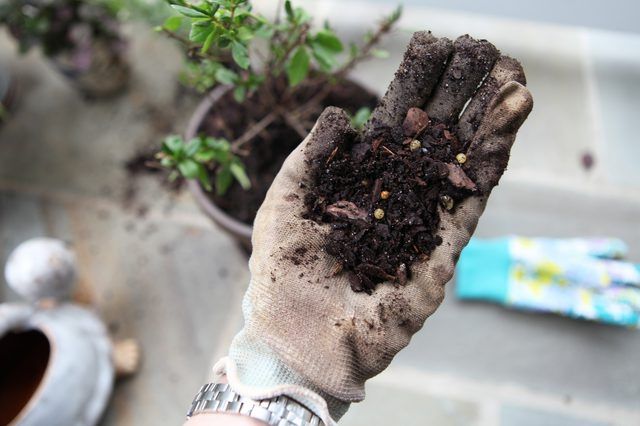
Careful watering keeps a potted azalea growing healthily and flowering well. Azaleas don't tolerate dry soil, but standing in water makes their roots rot. Use rainwater to water your shrub if it's available, and water the plant whenever the potting soil's surface dries out. Remove the container from its drip tray, and pour water slowly over the potting soil surface, avoiding the leaves, until it flows through the drainage holes. Replace the container on its drip tray when no more water drips from the base. You can help retain moisture in the potting soil by spreading a 1-inch layer of pine needles or bark chips over the potting soil surface, but don't let the mulch touch the azalea's stem.
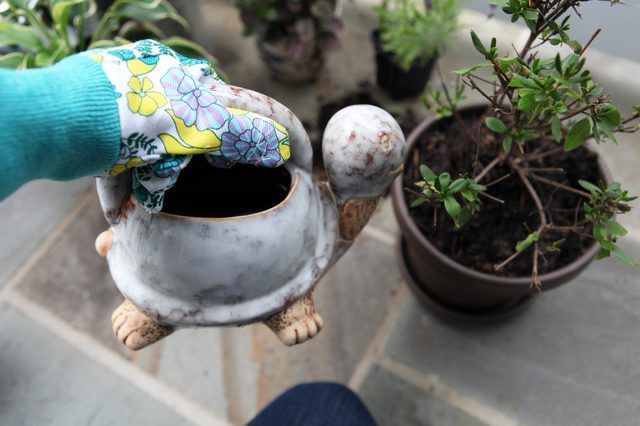
To create a dense, compact shrub, prune your potted azalea after flowering. Wipe your pruning shear blades with a cloth soaked in rubbing alcohol to help prevent the spread of pests and diseases, and prune dead, diseased or damaged growth where it joins the rest of the plant. If you prune a stem that's rotting, discolored or looks otherwise diseased, sterilize the blades again before you make another cut. Prune shoots that are crossing, too long, or spoiling the shape of the shrub, and wipe the pruning shear blades with rubbing alcohol when you finish. If your potted azalea's stems are green and soft, you can also encourage the plant to grow more densely by pinching 1 inch off the ends of the stems. You can prune and pinch off stems until midsummer, but don't prune after this date because you risk removing next year's flower buds.
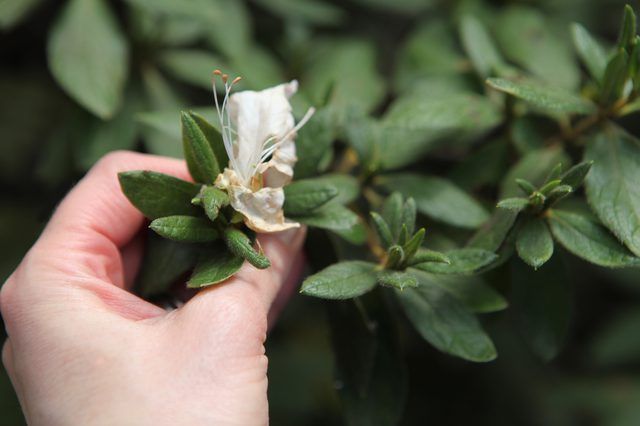
Leaf miners, lace bugs, spider mites and azalea caterpillars are some pests that attack azaleas, and the plants can suffer from leaf and flower gall, petal blight and dying back diseases. Signs of pest infestation include speckled, bronzed or rusty-looking leaves, brown spots or rolled leaves and chewed foliage. Diseases appear as spots on petals that turn wet and slimy, large misshapen masses on leaves and blooms, and general poor health and decline. Most azalea pests on indoor and outdoor plants can be controlled with a ready-to-use insecticidal soap. Spray all plant surfaces except the flowers with a product product containing 1 percent potassium salts of fatty acids, and apply the product every week until the pests are gone. Insecticidal soap doesn't control azalea caterpillars, so pick them off by hand and destroy them. Removing infected areas of the shrub controls most azalea diseases. If a potted azalea is dying back, it's unlikely to recover and should be put in the trash.
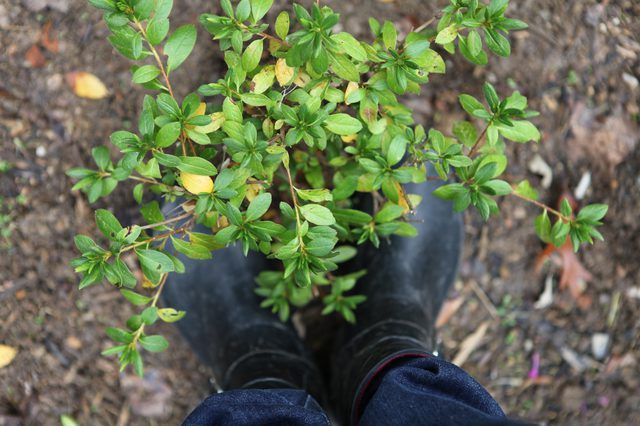
Indoor azaleas don't flower unless they're exposed to low temperatures in winter, while outdoor plants can suffer from heavy frosts. Place an indoor azalea in a brightly lit area where the temperature is about 45 degrees Fahrenheit for two months during fall or winter. To prompt the shrub to flower, move it to an area where the temperature is about 60 F, or leave it to flower naturally when the weather warms up in spring. Protect an outdoor potted azalea from temperatures below 40 degrees Fahrenheit by moving the plant to a frost-free area or covering it in horticultural fleece. You can also protect potted azaleas by digging a hole and sinking the container into the ground.
